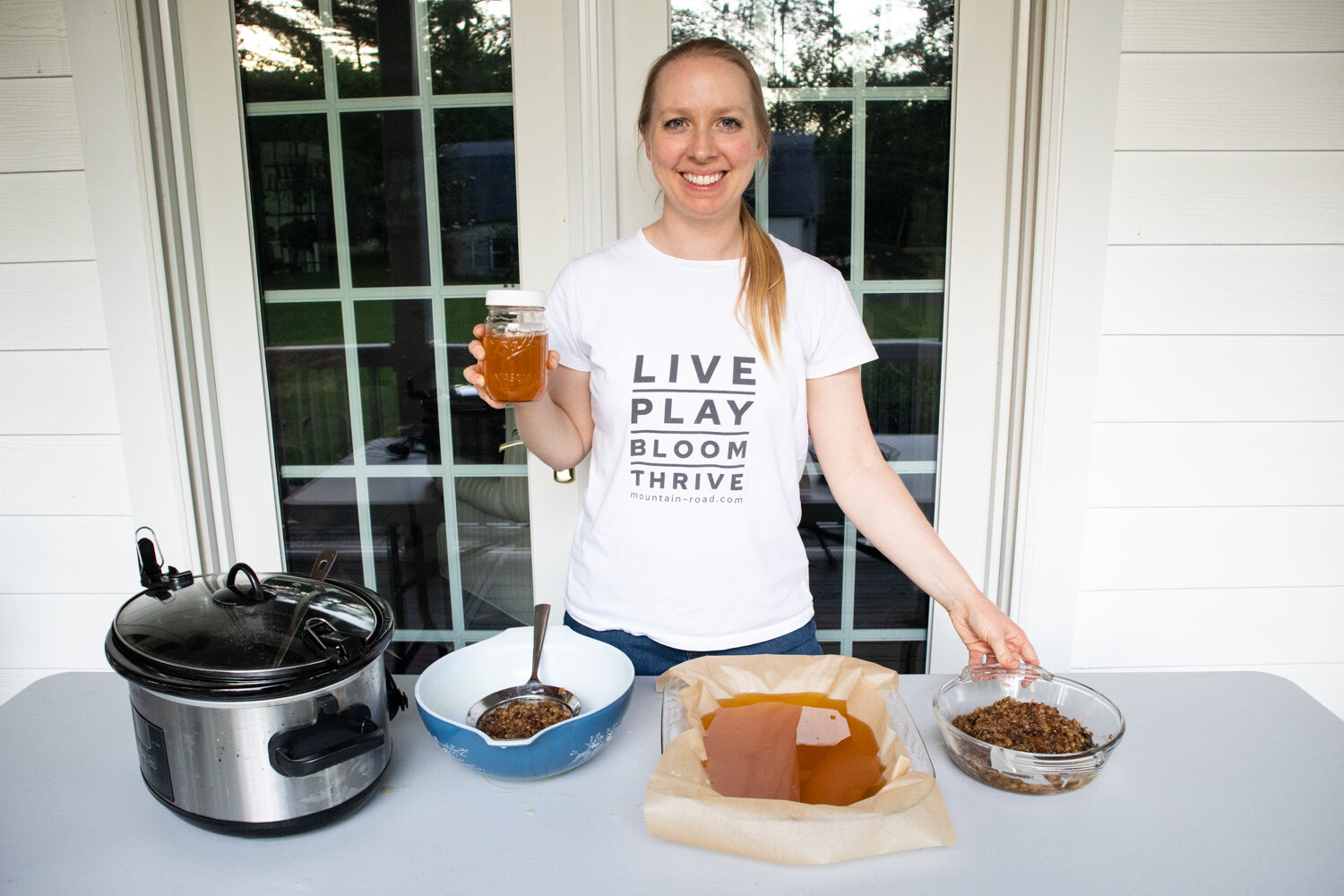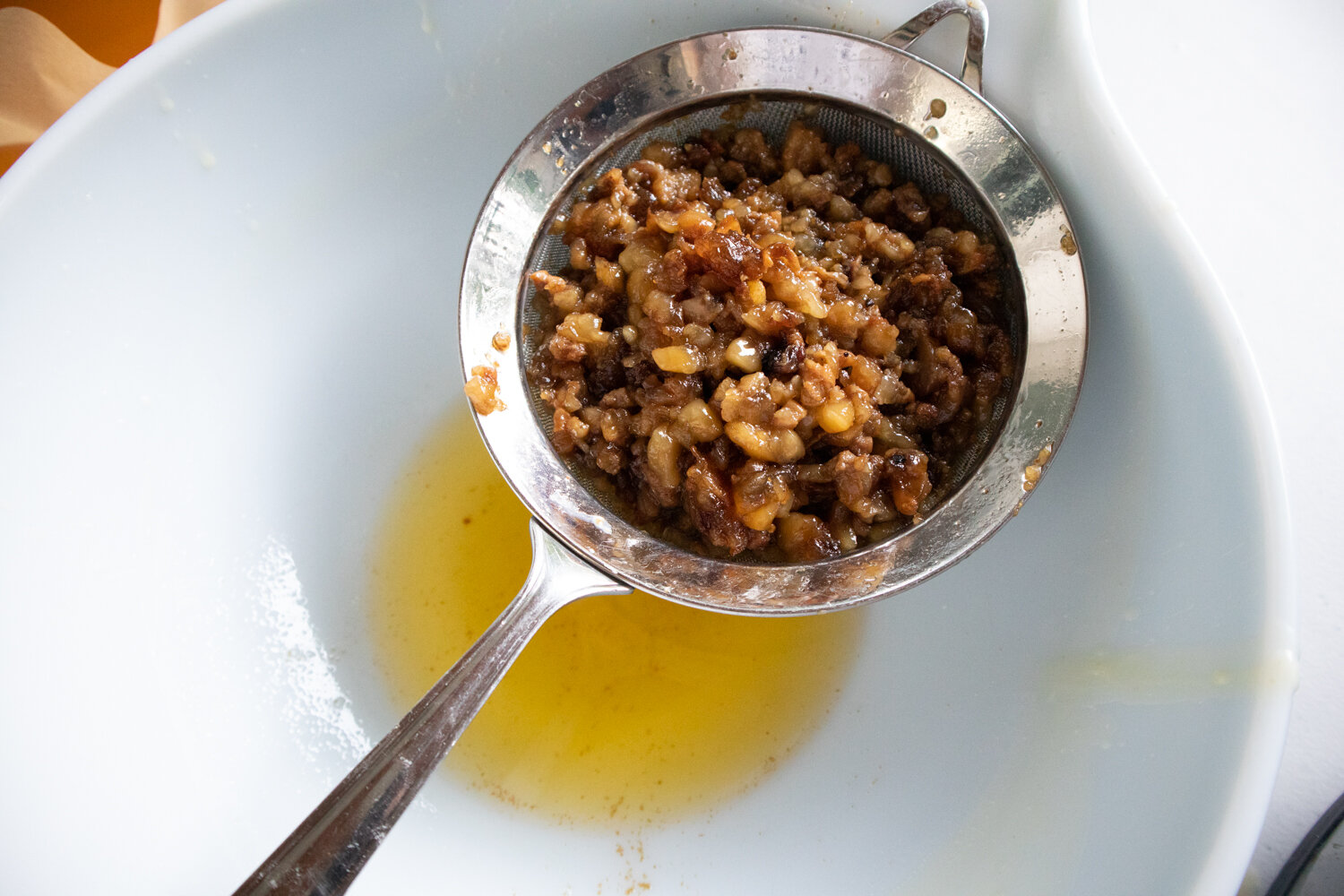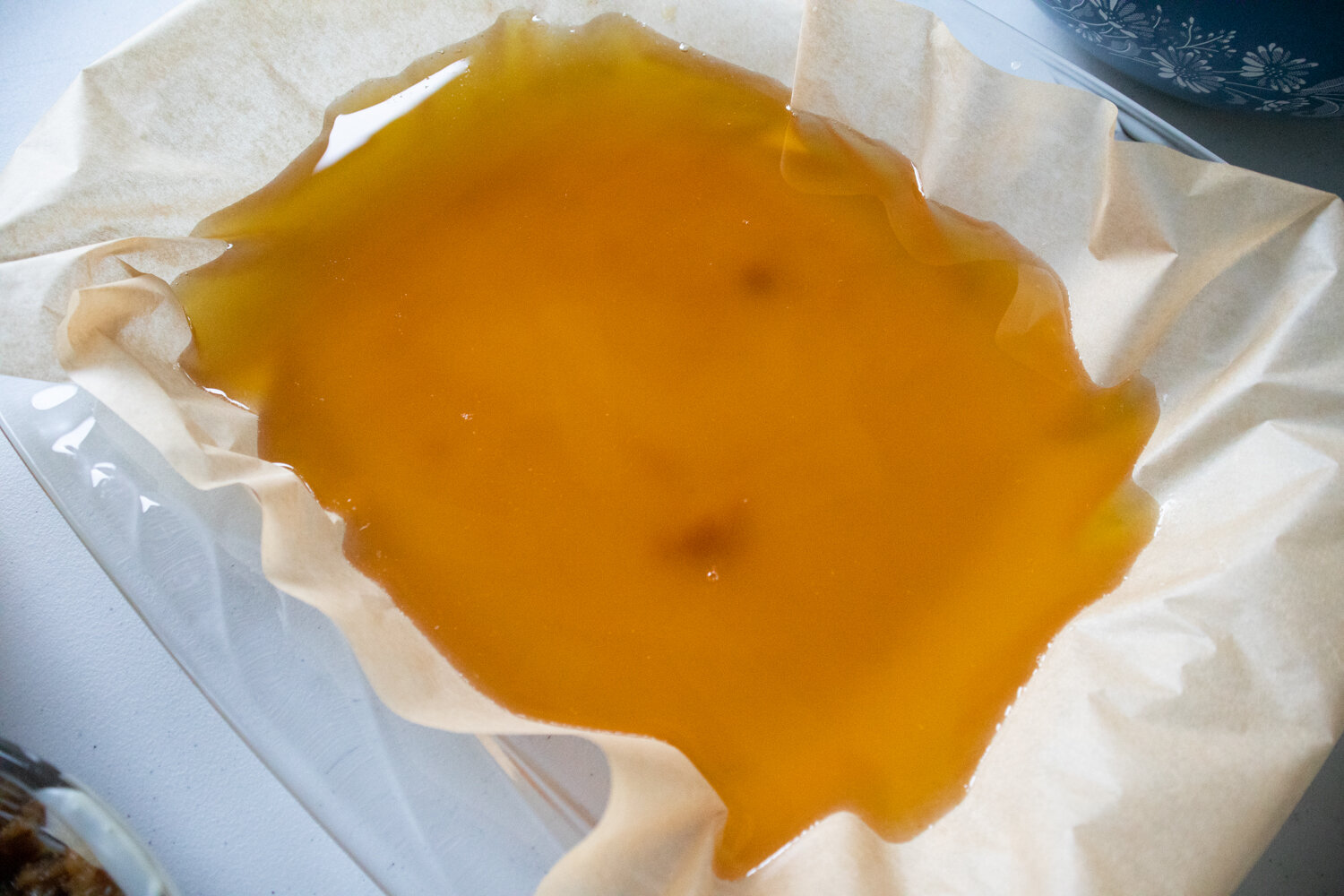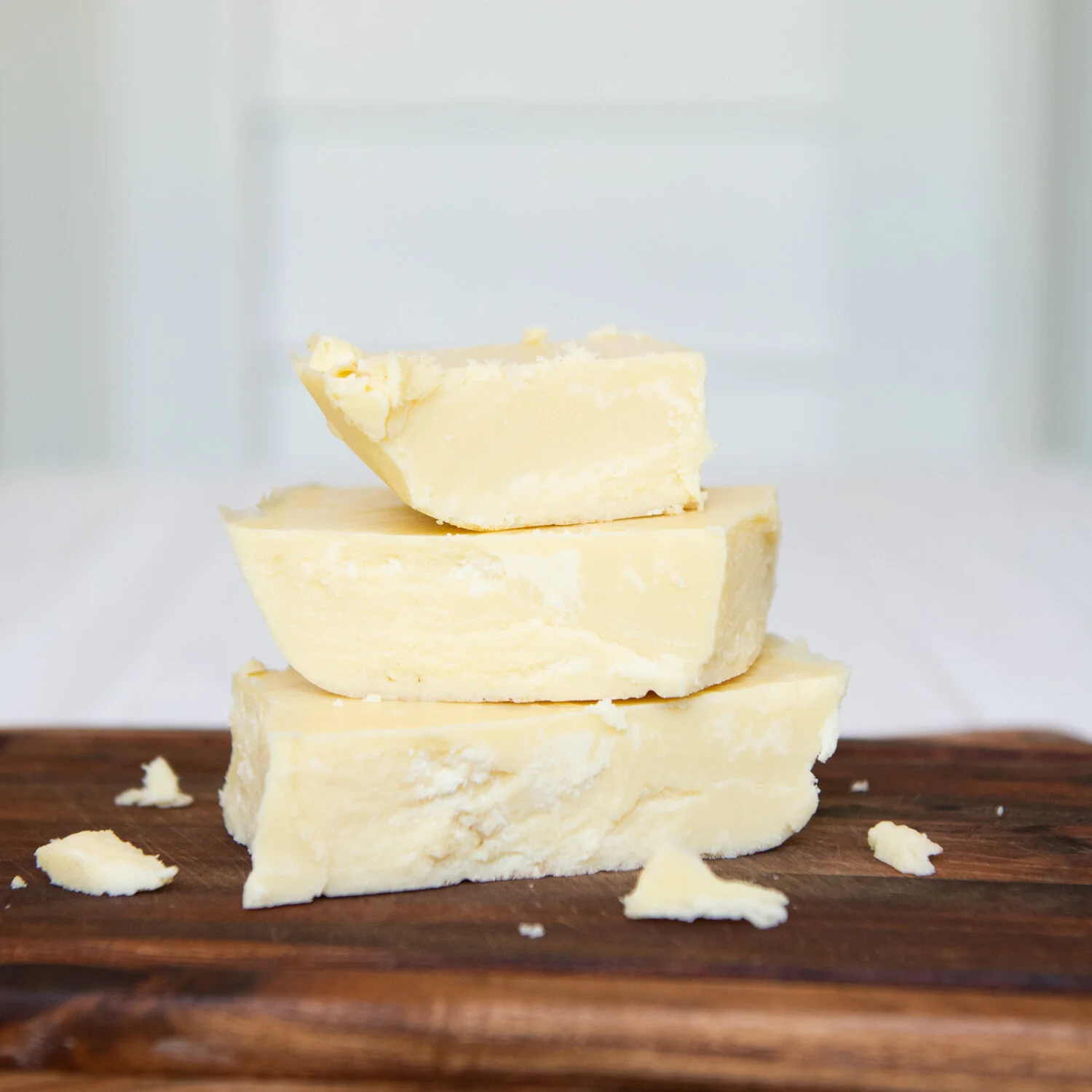Transform your cooking and skincare with tallow! Here's how to make it…
Disclaimer: This post contains affiliate links, through which we earn a commission.
I've mentioned my appreciation for tallow quite a few times in previous blog posts, so I'm finally sharing the process for how to make it. Check out the video here! The only ingredient necessary for rendering (or melting) tallow is beef fat (a.k.a. suet). This can generally be obtained from the local butcher. We purchase a steer once or twice a year from a local farmer and request that beef fat be included. If there's a farmers market in your area with a local meat provider, they'll also be an excellent resource. And if you still can't find beef fat, check out US Wellness Meats, selling quality grass-fed meat products.
Tallow can be used in countless ways, including cooking, skincare, soaps, candles and more! It is an excellent fat for cooking at high temperatures, because it has a high smoke point. When making stews, I like to braise the meat in tallow before putting it in the slow cooker. And I also make homemade French fries with tallow. I can understand anyone who may be unsure of cooking with animal fat, as we've heard for decades that it should be avoided. But in 2013, I learned of the research of Weston A. Price, which demonstrated how important animal fats are for human health and vitality. Ancestral peoples have utilized animal fats for centuries, with much better health success than that of today's factory oils, such as canola and vegetable oil. Personally, my journey to better health began when I stopped being afraid of animal fat. As a child greatly interested in health, I followed the USDA's food pyramid and the low fat diet, because those were supposedly the avenues for wellness. However, that way of eating led to health issues and I've seen great improvement to my wellness as a whole, by turning away from the Standard American Diet (SAD) and adding animal fat to my diet. For more information on the subject, check out the Weston A. Price Foundation. And as always, check with your doctor before making changes to your diet.
Tallow has also transformed my skincare routine. Several years ago, my sister-in-law gifted me skincare products from a South African company called Pure Primal. I wrote a blog post all about it here. They use tallow as a base for a lot of their skincare products. Ever since, I've incorporated tallow into my skincare routine, which I wrote all about here. Historically, I have suffered from very dry, cracked and painful hands in the winter time. But for the last few winters, I've applied tallow to my hands a few times a day, usually with a drop of my favorite essential oil, and my hands have been so much better. Tallow is a product that I'm so thankful to have discovered in recent years, and I want to share how great it is, for others to enjoy.
I made tallow once before, and the resulting fat worked very well for cooking. However, the consistency was more wet that I'm used to from store-bought tallow, and did not provide an affective skin moisturizer. As such, I have continued to purchase tallow from Epic, which I really enjoy for both cooking and skincare. Ancestral Traditions is also an excellent brand for tallow. I made my second round of tallow for the video corresponding with this blog post, and this time the consistency turned out incredibly dry, working well for both cooking and skincare. Check out the process below to learn how tallow is made!
How to Make Tallow
Preparation Time: approx. 1-2 hours
Cooking Time: approx. 5-6 hours
Straining Time: approx. 30 minutes
Cleanup Time: approx. 30 minutes - Tallow is messy!
Equipment:
Slow Cooker or Large Stock Pot with Lid
Large Cutting Board
Chef's Knife and / or Serrated Trimming Knife
Food Processor (optional)
Large Stainless Steel Spoon
Fine Mesh Strainer or Colander lined with Cheesecloth
1 Large Bowl and 1 Medium Bowl
Stainless Steel Ladle
Mason Jars and / or Rectangular Baking Dish lined with Parchment Paper
Resealable Food Storage Bag
Cotton dishcloth
For Cleaning:
2-3 Dish Sponges & Dish Soap
Pot Scraper
Ingredients:
Beef Fat / Suet
Instructions:
If your beef fat is frozen when you acquire it, you'll need to allow about 8 hours for it to thaw. If it arrived refrigerated, be sure to make the tallow within a day or two, or freeze it immediately until ready for rendering. Using a cutting board and a chef's knife and / or serrated trimming knife, with great care, cut the beef fat into smaller 2-inch cubes. You may want to try different knives to see which one works best for the cuts of fat that you have. Try to remove pieces of meat and blood from the fat. It can be difficult to remove everything, so whatever doesn't come off will be cooked off and strained later. If you have a food processor, you can put several cubes in at a time and grind the fat up. If you are not using a food processor, just cut the fat as small as you can. I personally prefer cutting by hand, as it eliminates the need to wash the food processor afterwards. Put the cut-up fat into the slow cooker or large stock pot. Set to the lowest heat option and allow the fat to cook for approximately 5-6 hours, stirring every so often. Keep in mind that the smell can become quite strong with an oily odor, and because of this, some people cook the tallow in a slow cooker outdoors. However, both times that I’ve made it, I’ve managed to cook it indoors without too much bother. It will be ready when you have a separation of liquid and crispy, well-cooked solids floating at the top. Turn off the heat. Using a fine mesh strainer or colander lined with cheesecloth, carefully ladle the contents of the slow cooker / stock pot into the strainer or colander, over a large bowl to collect the tallow. The spare medium-sized bowl can be used to discard the solids after being strained. Pour the liquid tallow into your containers. As it cools down, it will solidify and change to a more whitish / cream color.
There are many ways to store tallow. It can be stored at room temperature, in the refrigerator or freezer. I stored my first batch of tallow in the freezer, especially since it had more wetness than usual. But my latest batch is so dry that I don't mind keeping it in the refrigerator. It can be stored in mason jars. Additionally, liquid tallow can be poured into rectangular baking dishes lined with parchment paper. Cover with a clean dish cloth and allow the tallow to cool down and solidify for several hours. Then cut up the tallow into desired shapes and sizes. I like to cut mine into small cubes about the equivalency of a tablespoon, and then place in a food storage bag and store in the refrigerator or freezer.
Keep in mind that the clean up can be very challenging, as the tallow is difficult to remove from surfaces. It's helpful to have a plastic scraper, and one sponge dedicated to removing the majority of the tallow from a surface, coupled with a second sponge that provides a soapy rinse.
Rendering beef fat into tallow is an awesome way to honor the life that the animal has lived, and the sacrifice that it has made, by utilizing every part, nose to tail. The process is very economical. And tallow is a really healthy and wholesome product that I love to have in our home. If you're already a fan of tallow, let us know some of your favorite uses in the comments below! And if you're new to the idea, what are your thoughts? We love to hear from you!
- Christin












